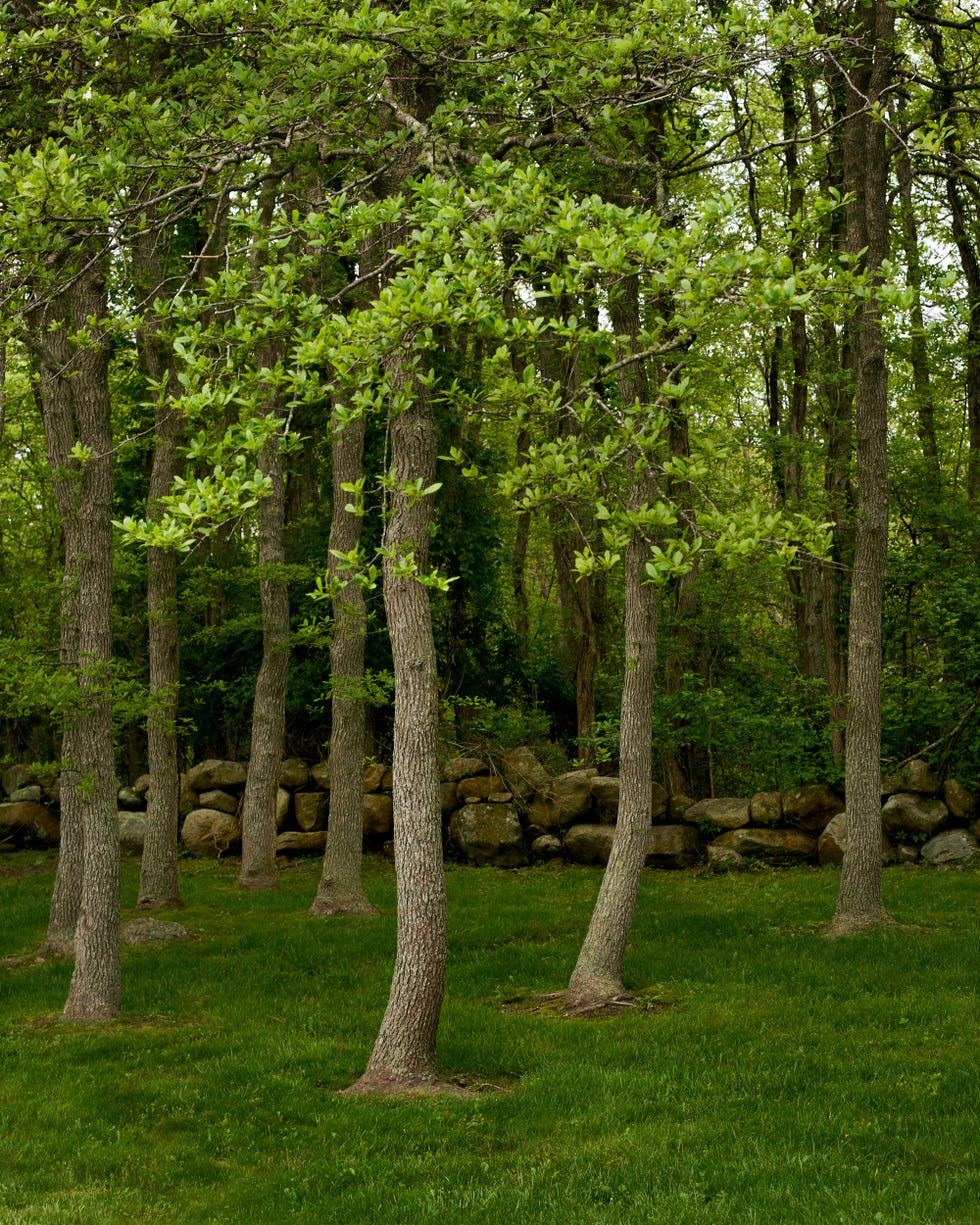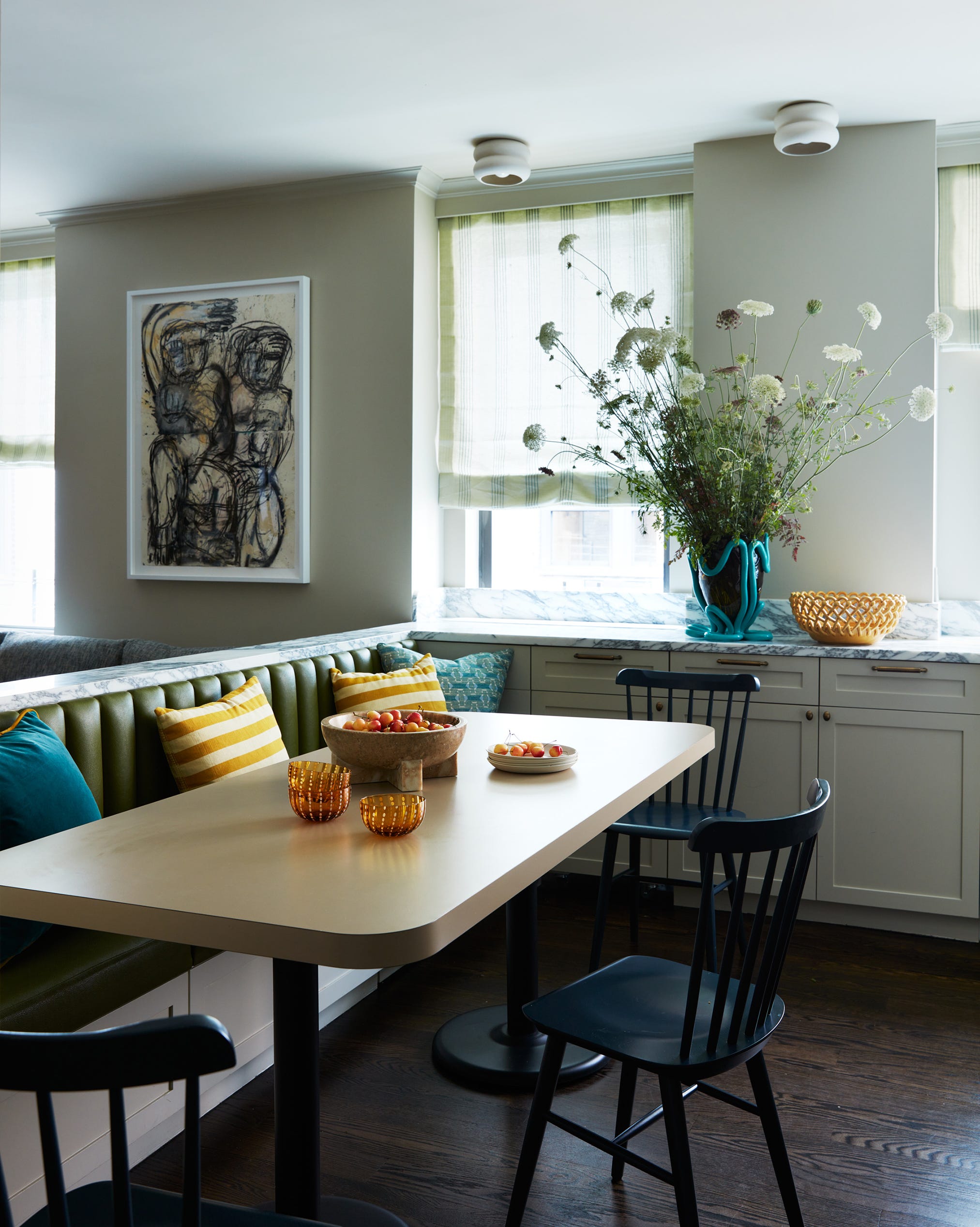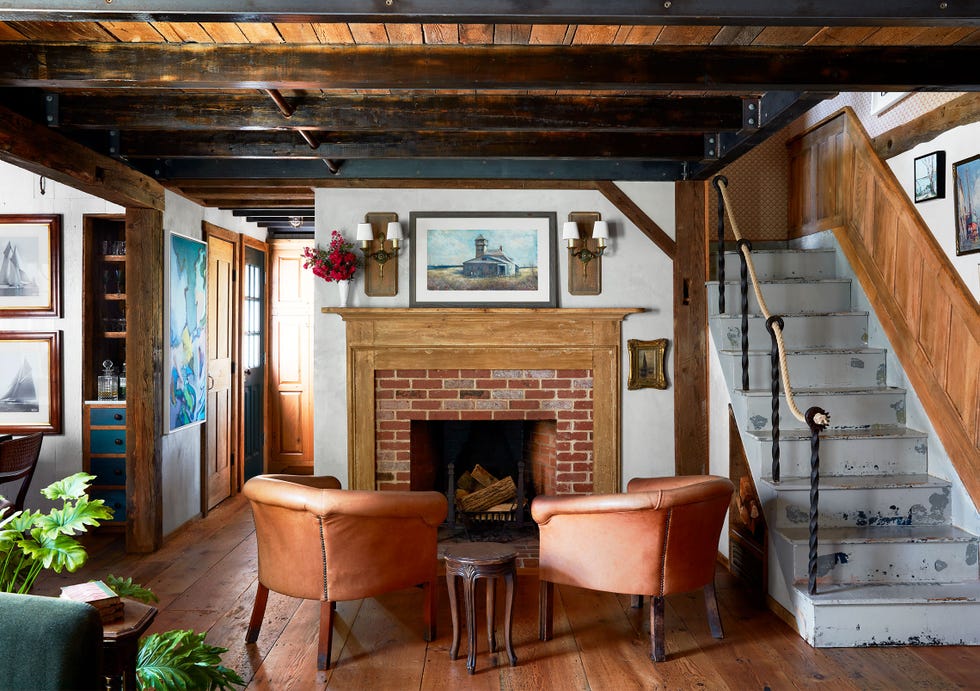Many designers bemoan the day they’re called on to decorate for family. Not Billy Cotton. Almost 20 years ago, while he was still a student at Pratt Institute in Brooklyn, New York, Cotton started altering and refining the homes his parents built in Martha’s Vineyard, Massachusetts, turning them into a testing ground for his interior design and architecture practice. “It has been a bit of a design education,” he says.
“The starting point was the land,” Cotton continues. Originally home to the Wampanoag, who still live on a nearby reservation, this part of Aquinnah and nearby Gay Head is lush, fecund, and remote: the perfect respite for the multi-cultural, intellectual community that was developing here just as Cotton’s father first started exploring the wild landscape in the 1970s, when he was in his late 20s. Together with Cotton’s mother he purchased three acres for a pittance and erected the first of two cedar clad Acorn Deck Houses in 1974, before the second went up in 1988. “The nearest grocery store is 40 minutes away,” says Cotton. “Cell reception only arrived 6 years ago, and it was forever before we had internet.”
Cotton consulted with the legendary Edwina von Gal on the home’s immediate surroundings. “We worked together on Cindy Sherman’s property, and she’s been a mentor to me,” Cotton says. Von Gal suggested extending the original 19th century stone walls that encircled the property. “She was the one who gave me the idea to continue them and create a platform on the sloping land,” Cotton says. “It really transformed the way the houses sit. Before they sat like towers and didn’t commune with what was around them. Now they are a presence amidst the landscape.”
The main architectural change Cotton made to the two houses was to connect them, which his firm did in 2021. Inside, furnishings were kept simple to better enjoy the views, air, and energy of the space. Out of the wide windows, Cotton’s family and friends could spot Birnam trees and blueberry bushes. Deer, rabbits, and osprey are frequent visitors. “As I spent time working on the landscape and trying to declutter and bring clarity to that, it made me want less and less in the house,” says Cotton. “Unless I am working on a historic interior, I am a constant editor.”
The ad hoc interventions Cotton’s parents made in the houses were retained, like a driftwood bookshelf his mother built herself with plumbing pipes in the living room and a kitchen island with its butcher block top and industrial steel base. Many of the furnishings have unexpected origins: The rattan sofa and armchairs in the main living room were salvaged from the hospital where Cotton’s mother worked as a psychologist. Cotton upholstered the cushions in the same Claremont stripe as the window seat in the same room. The paintings in an upstairs bedroom are by Cotton’s first boyfriend. It was his mother that first exposed Cotton to the soul of things. “She taught me the word patina at the age of four,” he says.
One seating area boasts a custom corner sofa with a matching ottoman and a favorite chair of Cotton’s by Piero Lissoni for B&B Italia. One dining area boasts Josef Hoffmann chairs that gather around a custom dining table on casters, in the style of Joan Kron and Suzanne Slesin’s book High-Tech. Antique Hitchcock chairs with rush seats surround a dark oval antique table in the other dining room. For a house so sparse, there is ample room to nest, rest, and engage.
With seven bedrooms spread over its 3,000 square feet, the house is “tiny, but mighty,” Cotton says. He and his family used the space for entertaining, and that was its intended purpose: “to fit and function for as many people as possible,” like the antithesis of the family compounds that proliferate nearby.
Cotton’s flexible aesthetic could reasonably be described as New Americana: building on the base of the familiar elements of the latter by constantly reinterpreting and expanding them . Considering this home’s location, and the continuous presence of its native people, Cotton’s development of a home-grown ethos is nowhere more evident than here. “America is an experiment,” Cotton says, “an experiment of democracy, design, and culture. In its best form its spirit is one of invention.”
Like his mother’s pipe and driftwood shelf, Cotton assembled this home over time with what he had, what he could use, and most importantly, what meant something to him. Though the house has evolved over the years, each intervention has brought it closer to its surroundings. “I have learned through this house that every home is a visitor to the land,” he says.






